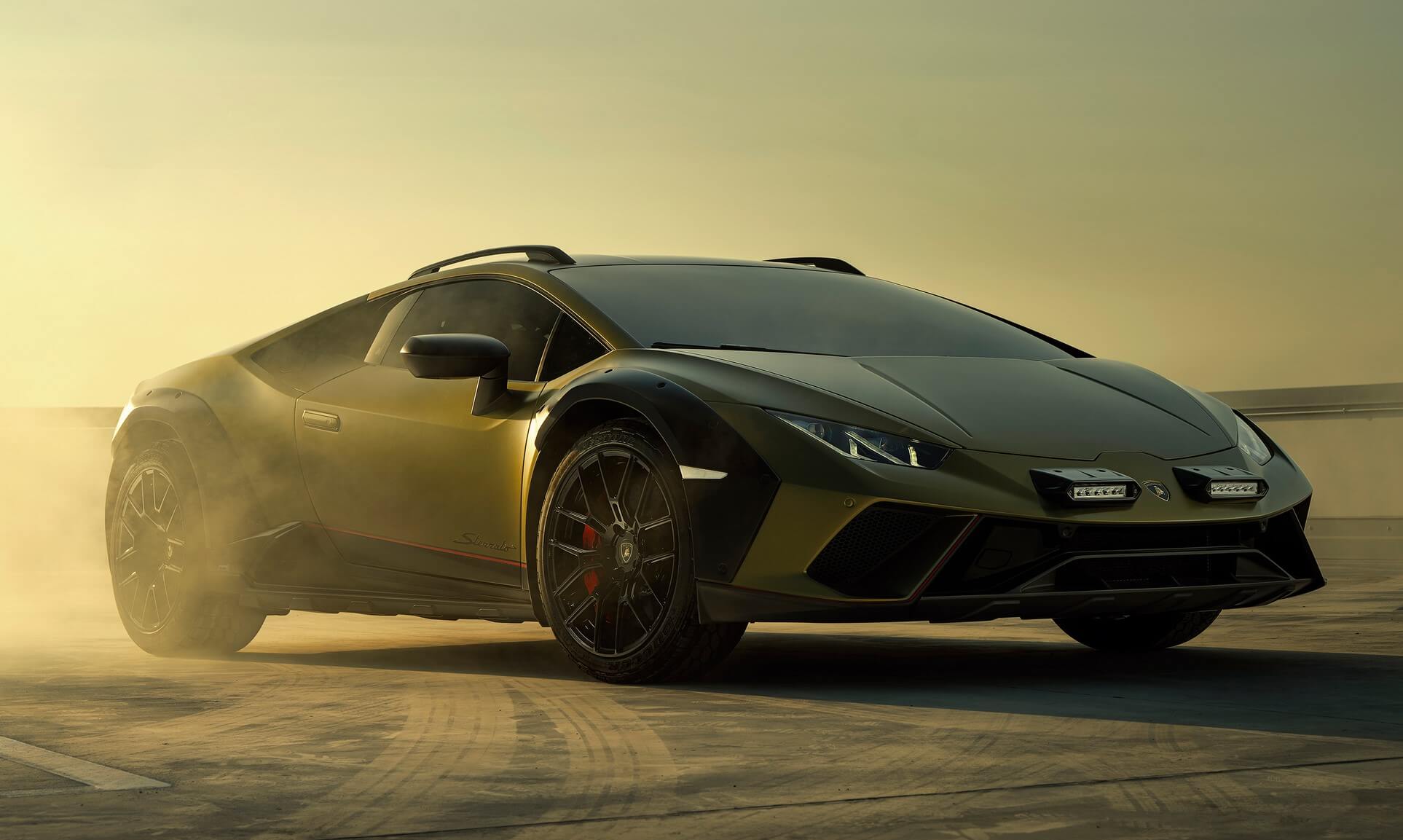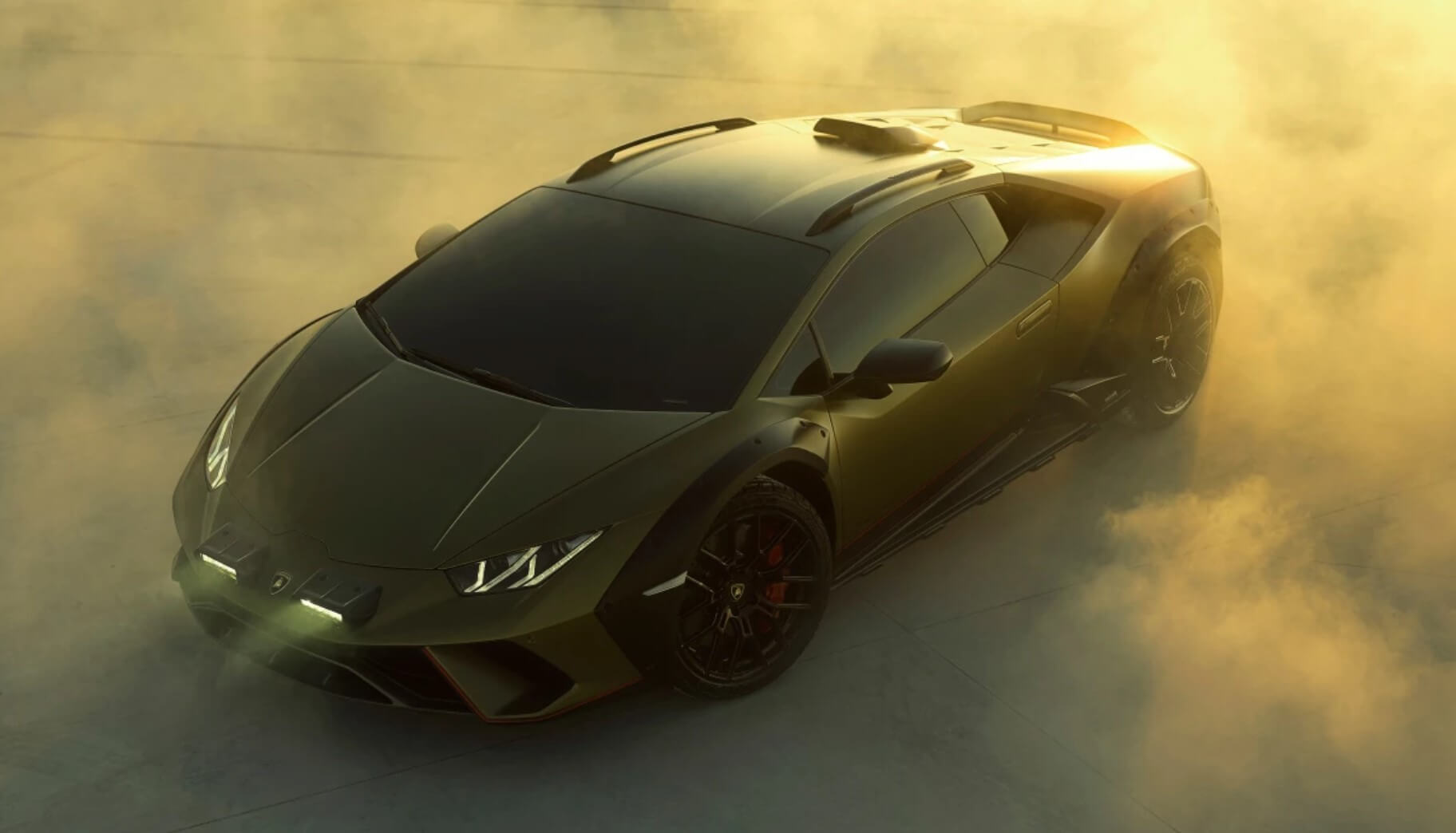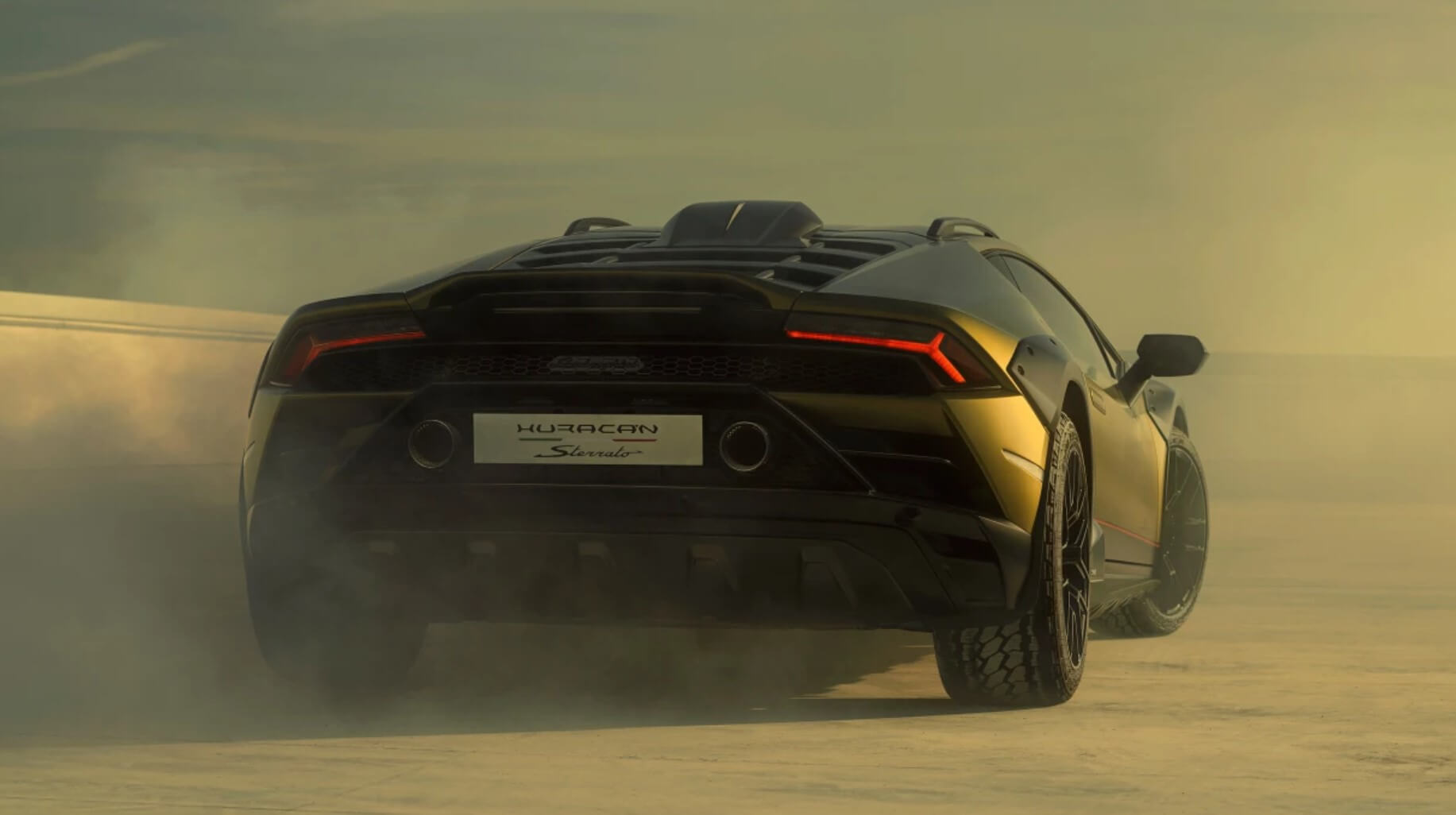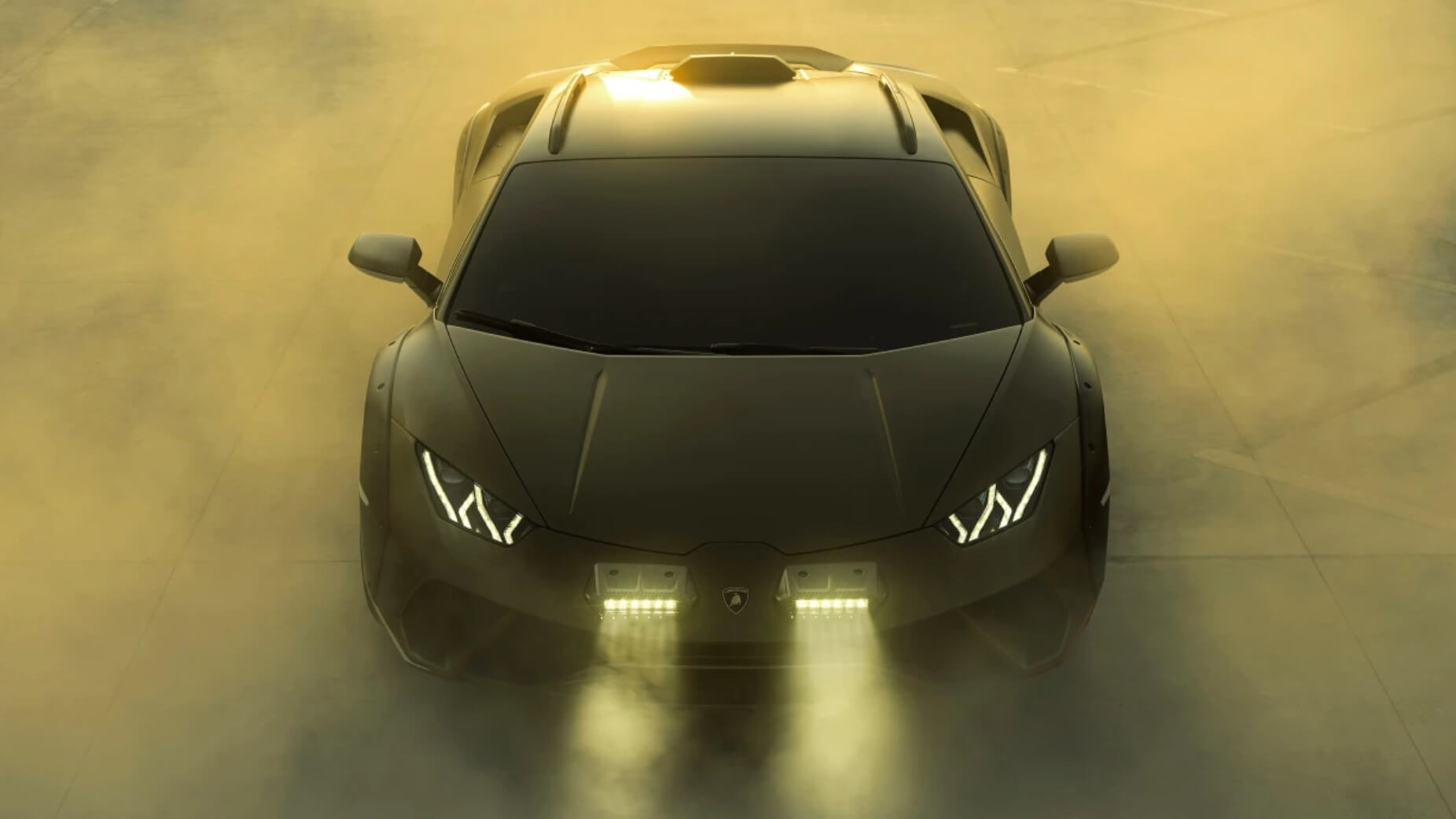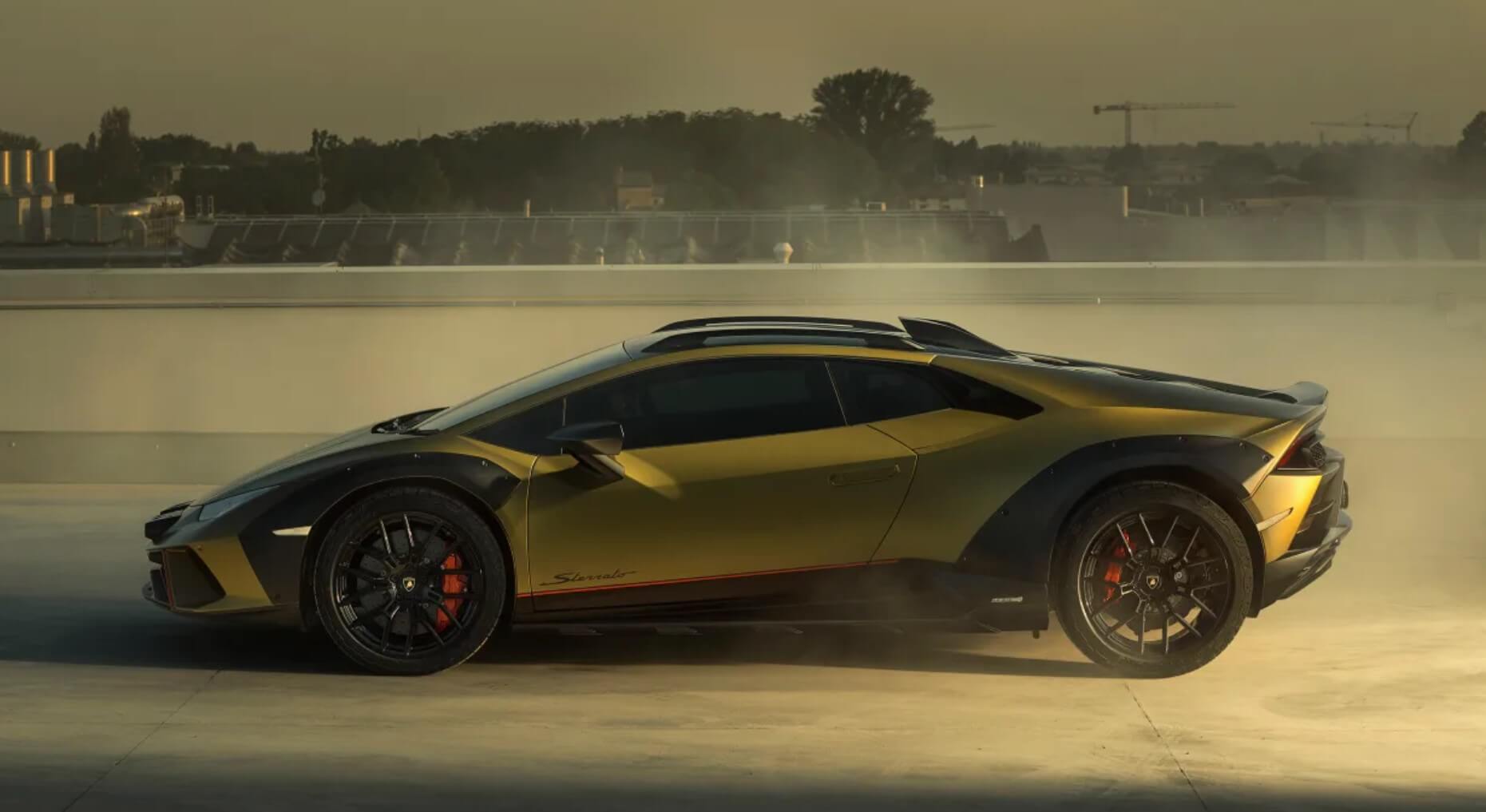The Lamborghini Sterrato arrives into a new rugged supercar segment as a wild, jacked-up version of the Lamborghini Huracan with V10 power.
Lamborghini has a reputation for shocking the automotive industry with its eye-catching supercars, but its latest creation could be the most surprising yet. It’s called the Huracan Sterrato and while it’s based on Lamborghini’s V10 supercar, it’s designed to tackle rough terrain.
The Sterrato is the “first super sports car designed for driving on loose surfaces, reinterpreting the concept of sportiness” says Lamborghini. Although we’ve seen Porsche unveil its new SC Safari-inspired 911 Dakar in recent weeks, there’s little else out there to rival Lamborghini’s new creation. Production will start from February 2023 and with 1499 units planned, the Sterrato will be rarer than the 911 Dakar. Lamborghini has already confirmed the model will be going on sale in Australia, too.
CEO of Lamborghini, Stephen Winklemann says the Sterrato “belongs in the world’s most dynamic and exciting driving environments”. Whereas the firm’s Chief Technical Officer, Rouvan Mohr, claims the car has “combined the driving experience of a supercar and the fun of a rally car”.
Judging by the way the Sterrato looks, it should fulfil Lamborghini’s vision for it. We first saw plans for the Sterrato back in 2019 with an off-road focused concept car and the final model looks pretty much the same as the early prototype. The production Sterrato doesn’t feature roof-mounted lights, but everything else is there.
At the front there’s a pair of LED lights on the nose of the Sterrato, while the concept’s flared wheel arches are carried over. There’s no sign of the titanium roll cage and front and rear skid plates we’ve seen previously, although there is a small lip spoiler at the rear, as found on the Huracan EVO model.
The nose features a pair of LED lights, a bespoke front bumper design and aluminium front underbody protection. The Sterrato’s off-road capability is further enhanced by a raised ride height – a 44mm ground clearance increase over the standard Huracan Evo. The track widths have been expanded by 30mm at the front and 34mm at the rear. The riveted-on wheel arches house a new style of 19-inch alloy wheel made specifically for the Sterrato and those wheels are wrapped in newly-developed Bridgestone off-road tyres.
Given that the Sterrato is perhaps the most extreme Huracan yet, you may expect to see it utilise the STO’s roof-mounted air intake but a new design has been created for the car to help provide clean air to the engine while driving on dusty surfaces. The sills have been reinforced to deal with tough off-roading and the off-road modifications extend to the rear where the diffuser has been removed in favour of a scuff panel. The car also receives the Huracan Evo’s more modest lip spoiler than the huge wing found on the STO.
The engine is the same 5.2-litre V10 we’ve been accustomed to seeing on Huracan models and in the Sterrato it pumps out 455kW and 565Nm of torque – the same as in the Evo RWD. It sends power through a seven-speed dual-clutch transmission to all four wheels. With the incoming Aventador replacement set to use hybrid power, the Sterrato could well be the last Lamborghini with an un-electrified powertrain.
Despite the focus on off-road ability, the Sterrato is only 0.1 seconds slower from 0-100km/h than the Evo RWD with a time of 3.4 seconds. Its top speed is severely reduced from 325km/h to 257km/h – which is mostly due to the all-terrain tyres. There’s also a mechanical self-locking differential to help put power down on loose surfaces.
The Sterrato gets its own driving mode selection with ‘Strada’, ‘Sport’, and the new ‘Rally’ option. The suspension uses a double-wishbone setup with hydraulic dampers and Lamborghini’s “MagneRide” electromagnetic damping adjustability. The brakes are made up of six-piston calipers at the front and four-piston ones to the rear with carbon-ceramic discs.
Lamborghini claims the Sterrato draws on the brand’s brief dabble with rallying during the 1970s, picking up where the specially-modified, desert-going Jarama and Urraco rally cars left off.
Back in 2019 Lamborghini’s Chief Technical Officer, Maurizio Reggiani (now Lamborghini’s Vice President of Motorsport) commented: “The Huracan Sterrato illustrates Lamborghini’s commitment to being a future shaper: a super sports car with off-road capabilities, the Sterrato demonstrates the Huracán’s versatility and opens the door to yet another benchmark of driving emotion and performance.”
Alastair Crooks




